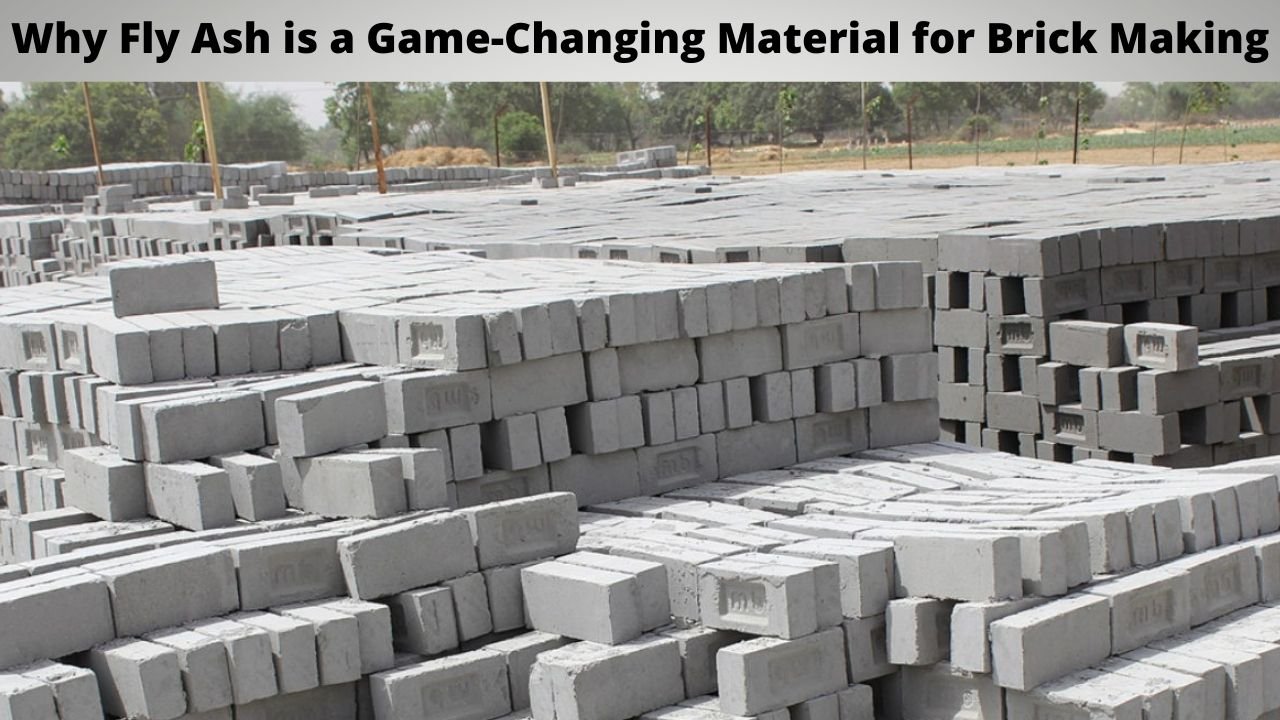Fly ash is a by-product of coal combustion, which is usually disposed of in landfills or used for concrete production. However, fly ash can be used as an alternative to traditional building materials like cement and sand in order to make buildings more sustainable.
What is Fly Ash and Why it’s so Important to the Construction Industry
Fly ash has been used for many years as an alternative to traditional concrete production methods. It is often seen as the perfect solution to the problem of disposing with coal combustion by-products.
Fly ash has a number of benefits when compared with traditional building materials like cement and sand that make it an ideal additive for construction projects.
Although fly ash can be a great replacement, there are times when it is not the best possible choice. When choosing between concrete and fly ash, both of which have benefits and drawbacks, it is important to consider the project type.

Where Did This Idea to Use Fly Ash in Bricks Come From?
Fly ash bricks are a good alternative to traditional bricks as they are more sustainable and have a lower carbon footprint.
In the past, coal-fired power plants would typically discharge fly ash into the air, but with the discovery of fly ash bricks, this waste product is now being used in construction.
Fly ash, also known as pulverized coal combustion waste or PCCW, is a byproduct of coal-fired power plants that is often disposed of in landfills or dumped into rivers. The problem with these disposal methods is that they release greenhouse gases into the atmosphere and pollute waterways. With the discovery of fly ash bricks, this waste product is now being used in construction instead.
How Did Fly Ash started to be used in Bricks?
The city of Huesca, in northeastern Spain, has been using fly ash bricks for many years.
Fly ash is produced when coal is combusted at power plants, and it can be used as a substitute for other materials in a variety of products. One of these products is bricks. Fly ash bricks are becoming increasingly popular in Europe because they are cheaper to produce than traditional clay or concrete bricks.
Fly Ash Bricks Properties
Fly ash bricks are manufactured by using the fly ash generated from coal-fired power plants. Fly ash is a byproduct of coal combustion and is made up of small particles that are created during the burning process.
Fly ash bricks are significantly cheaper than clay bricks, and they can be made in any color. This is because fly ash has a large variety of minerals that can be used to create different colors.
Fly ash bricks are a revolutionary building material that is stronger, more environmentally sustainable and affordable than clay bricks.
Manufacturing Process of Fly Ash Bricks
Fly ash bricks are manufactured by a process that is not only economical but also environment-friendly.
The fly ash bricks manufacturing process starts with the mixture of fly ash, cement and sand. The proportion of these three ingredients is dependent on the quality of bricks desired.
The mixture is then manually fed into a pan mixer where water is added to the required proportion for homogeneous mixing.
This mixture is then poured into moulds made from steel sheets which are kept in an oven at high temperature for baking. The final bricks are removed from the moulds.
Bricks made from fly ash have a high thermal capacity and can absorb and release heat quickly, making them well suited for large-scale construction projects.
Often, bricks are combined with ceramic materials to enhance their performance in insulation.Fly ash bricks have a lower density than ordinary bricks, requiring thicker walls to achieve the same level of strength.
As a result, the bricks are thinner and more porous than ordinary brick, with a lower heat capacity and thermal conductivity. These qualities allow for strong insulation.The high porosity of fly ash bricks makes them highly combustible, with a low flammable limit of 350 degrees Celsius (662 Fahrenheit).
Conclusion: Fly Ash use in Construction
Fly ash as a construction material has been used for over 50 years and has the potential to lower the cost of construction and reduce infrastructure maintenance, greenhouse gases and energy consumption.
However, fly ash is not currently used as much as other materials due to its high price. It is predicted that fly ash will increase in popularity in countries with high fuel prices. There are also environmental concerns about fly ash.
